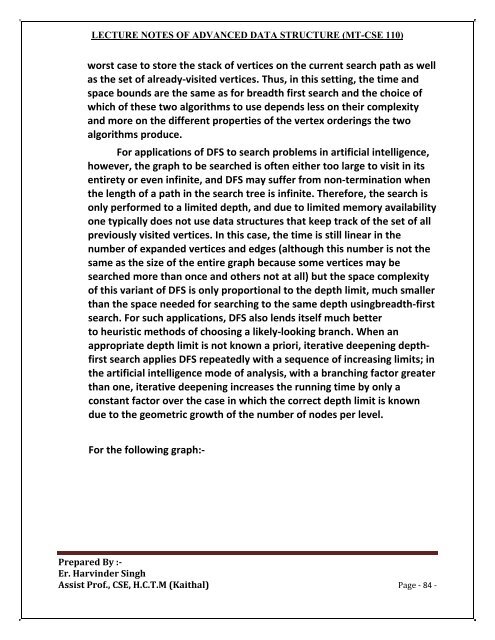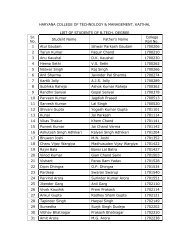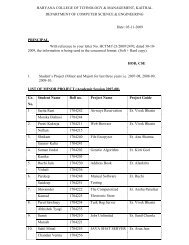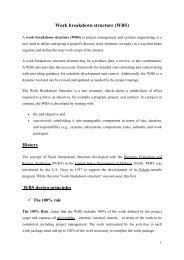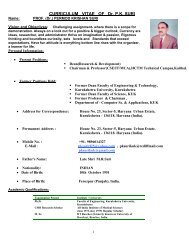Create successful ePaper yourself
Turn your PDF publications into a flip-book with our unique Google optimized e-Paper software.
LECTURE NOTES OF ADVANCED DATA STRUCTURE (MT-CSE 110)<br />
worst case to store the stack of vertices on the current search path as well<br />
as the set of already‐visited vertices. Thus, in this setting, the time and<br />
space bounds are the same as for breadth first search and the choice of<br />
which of these two algorithms to use depends less on their complexity<br />
and more on the different properties of the vertex orderings the two<br />
algorithms produce.<br />
For applications of DFS to search problems in artificial intelligence,<br />
however, the graph to be searched is often either too large to visit in its<br />
entirety or even infinite, and DFS may suffer from non‐termination when<br />
the length of a path in the search tree is infinite. Therefore, the search is<br />
only performed to a limited depth, and due to limited memory availability<br />
one typically does not use data structures that keep track of the set of all<br />
previously visited vertices. In this case, the time is still linear in the<br />
number of expanded vertices and edges (although this number is not the<br />
same as the size of the entire graph because some vertices may be<br />
searched more than once and others not at all) but the space complexity<br />
of this variant of DFS is only proportional to the depth limit, much smaller<br />
than the space needed for searching to the same depth <strong>using</strong>breadth‐first<br />
search. For such applications, DFS also lends itself much better<br />
to heuristic methods of choosing a likely‐looking branch. When an<br />
appropriate depth limit is not known a priori, iterative deepening depth‐<br />
first search applies DFS repeatedly with a sequence of increasing limits; in<br />
the artificial intelligence mode of analysis, with a branching factor greater<br />
than one, iterative deepening increases the running time by only a<br />
constant factor over the case in which the correct depth limit is known<br />
due to the geometric growth of the number of nodes per level.<br />
For the following graph:‐<br />
Prepared By :<br />
Er. Harvinder Singh<br />
Assist Prof., CSE, H.C.T.M (Kaithal) Page ‐ 84 ‐


